Introduction

Hello, I'm Bill Gates, the chairman of the board of the Micro-Soft Corporation.
I'm here today at your school to give you the opportunity to find out what it's like to work at a software company!
I'd like you to evaluate the technologies available today and answer the question "which computer programming language is the simplest for me to use?"
Don't worry! It's going to be very simple and a lot of fun!
Task
Your task is to research different computer programming languages and choose one to write a simple program in.
First you will search for some languages and choose a few that sound interesting to you. There are a lot of languages out there!
Of course, I want you to understand what your chosen languages are typically used for. You wouldn't build a car using wood or a house out of sand, you must use the right tool for the job!
Then you will apply this knowledge to create a final list of languages you want to try out. Some languages are simpler than others, but they all have their uses. Compare and analyze the languages and then experiment and evaluate them to decide on a final one.
Finally, use an online tutorial to create the simplest example program you can, usually called "Hello World." Like the name implies, all it will do is say "Hello World!"
Don't worry if this sounds confusing at first- It will make sense as you go!
Process
Step 1
First, find a list of programming languages on the internet. Here is a list, but it's too detailed!
https://en.wikipedia.org/wiki/List_of_programming_languages
Wow, that's a lot of programming languages! How can we decide which ones are useful?
Well, one indicator is how popular a language is. If many people are using it, it is probably pretty useful. (But keep in mind this isn't always true! Things can be popular and useless as well!)
There are many websites that rank languages by popularity, here is one of the first results on Google:
Step 2
Pick a few popular languages (or less popular ones if you are daring) and remember them for the next step! For an example I am going to pick Python.
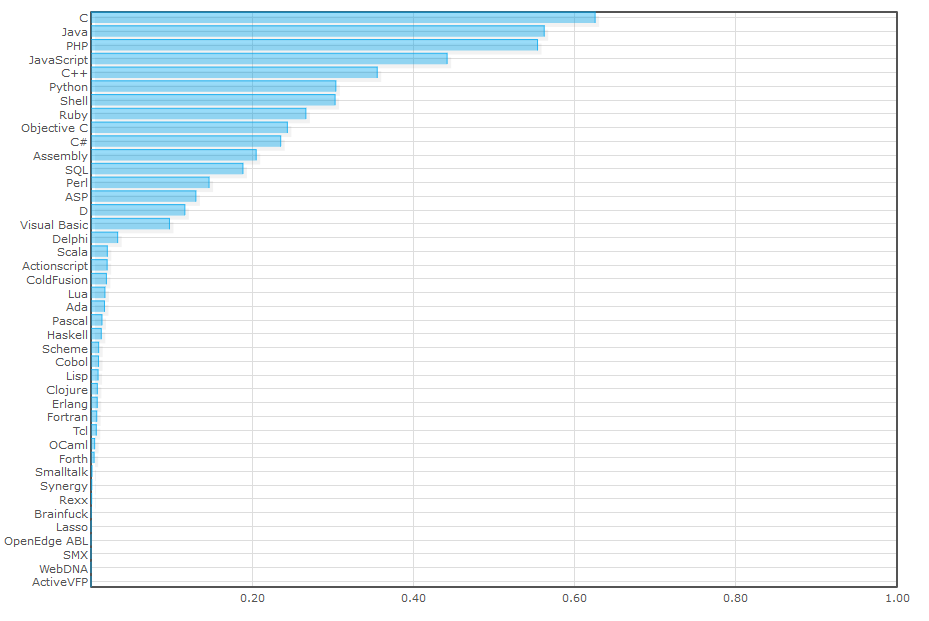
Step 3
Now I want you to research and understand what your chosen languages are typically used for. For example, PHP is commonly used to create websites, and Python is commonly used for teaching.
Try searching on Google for "most common use of ___ programming language" and see what comes up! Some languages are used for many things, there may not be a clear answer.
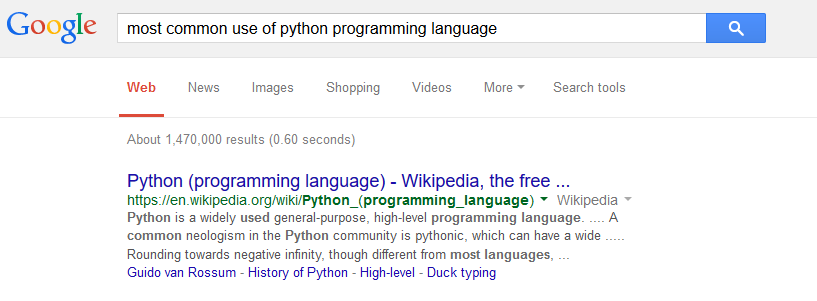
Repeat this for a few languages. Come up with a list of languages you're interested in and compare them to choose a final one to experiment with!
Make a Google Doc (or any other online document) and list your languages along with a short description of what they might be used for.
Step 4
Next, you'll find some example source code for a "Hello World" program written in your language. "Hello World" is the simplest program you can write, all it does it say "Hello World!"
Here is a list of "Hello World" programs written in many languages! Find your language and compare them to see if you can spot the differences in the languages. Some of them are very similar, and some are very different!
https://en.wikipedia.org/wiki/List_of_Hello_world_program_examples
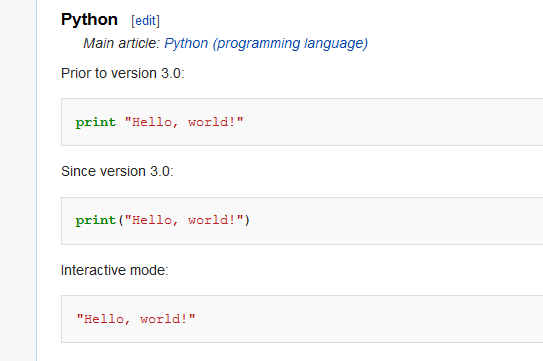
Pretty simple, right?
Add this code to your Google Doc! Bonus: Try to find some other small code examples.
Step 5
Finally, you will use an online development environment to compile and run your code.
Now let's make it into a real program!
Go to one of these sites and find a way to paste your code into the online editor.
It may take some playing around with, but find a way to compile and execute your code. If it doesn't work, try a different site. You may have to use trial and error!
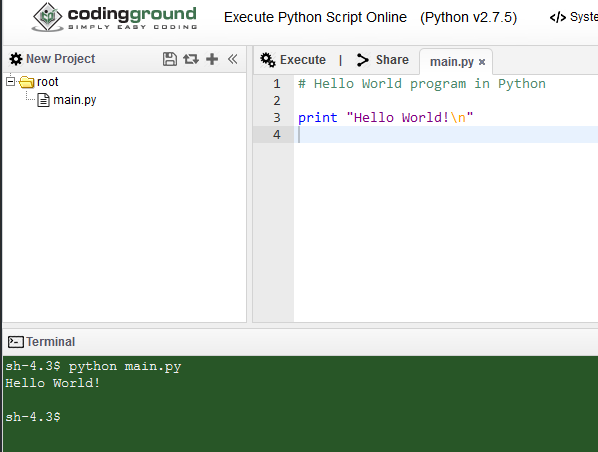
Here is an example using Python. Notice at the bottom how I have run the program and it printed "Hello World!"
You can mix it up a bit and change the program to say something else, or even do something completely different! It's totally up to you!
Evaluation
Make sure the program actually runs! It should say "Hello World!" in the console output somewhere.
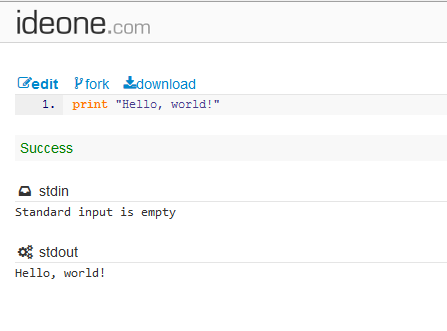
Take a screenshot of your compiled program and upload it to your Google Doc!
That's it! You've made a real computer program! Pretty cool, right?
I'm telling you, this stuff will be really important someday!

Conclusion
Formative Assessment:
I will check your Google Doc to make sure you have completed each step of the task.
Summative Assessment:
The final screenshot will demonstrate whether the program you have created actually runs correctly. It's pretty simple, but a great learning experience!
Standards covered: CSTA K-12 8. A. 1. Sample Activity
Credits
Created by Robert Pelloni
This WebQuest was created for Linda Ullah's class on Designing Web Based Learning Projects!
